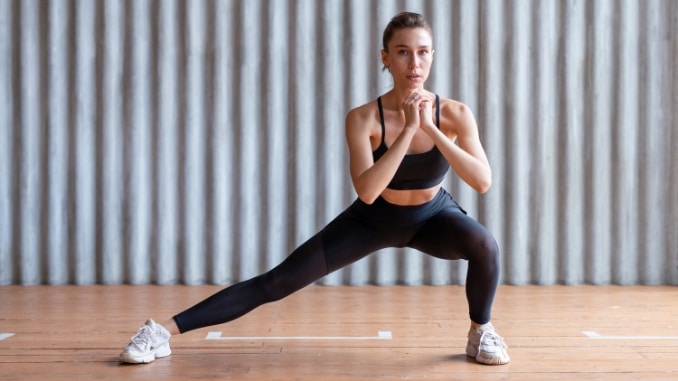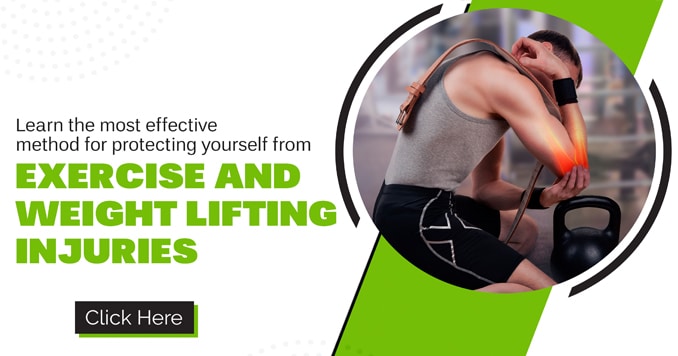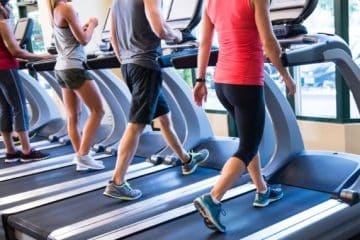In pursuing physical well-being, many individuals find both satisfaction and necessity in strengthening and lengthening their lower bodies. The lower body is a foundation for everyday activities, athletic endeavors, and overall health. Achieving strength and flexibility in this region is a common goal for diverse groups of people, from fitness enthusiasts to athletes and individuals seeking rehabilitation. Lateral exercises drills play a vital role in targeting the muscles on the sides of the lower body, including the hips and outer thighs. These exercises enhance stability and balance and contribute to a well-rounded lower-body workout routine.
Strengthening Lateral Areas of the Lower Body
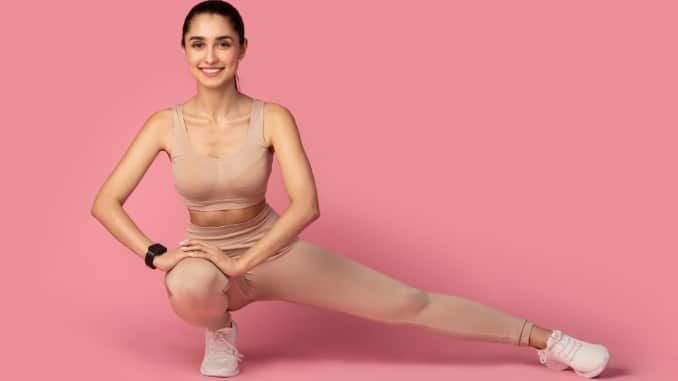
The lateral areas of the lower body encompass key muscle groups, including the hip abductors, tensor fasciae latae, and the outer thigh muscles. These muscles play vital roles in lateral movement, stability, and balance. The hip abductors play an important role in executing the movement of the leg away from the body's midline, a crucial action for walking, running, and lateral leg lifts. The tensor fasciae latae stabilizes the pelvis during these movements. Strong outer thigh muscles aid in activities like side lunges and lateral leg raises, enhancing agility and overall lower body function. Strengthening these areas is essential for injury prevention, improved athletic performance, and functional daily movements.
Strengthening and lengthening these lower body areas is vital for enhancing stability, preventing injuries, and improving functional mobility. These muscles contribute to balance, lateral movements, and posture. Strong and flexible lateral leg muscles reduce the risk of falls, support sports performance, and enhance overall lower body function. Additionally, maintaining the health of these areas aids in injury prevention, particularly for the hip and knee joints, and promotes a well-rounded fitness routine.
Lateral Exercises and Lower-Body Stretches
1. Standing Breaths
Begin in an upright standing position with your feet shoulder-width apart, and your knees slightly bent. Maintain good alignment with your head, shoulders, and hips. Engage your core, take a deep belly breath in through your nose, lift your arms overhead in wide arcs, and press your palms together overhead. Exhale and lower your palms down toward the heart center, bending your elbows out at your sides. Return to the starting position and repeat the sequence of movements. Start with 1 set of 5 repetitions.
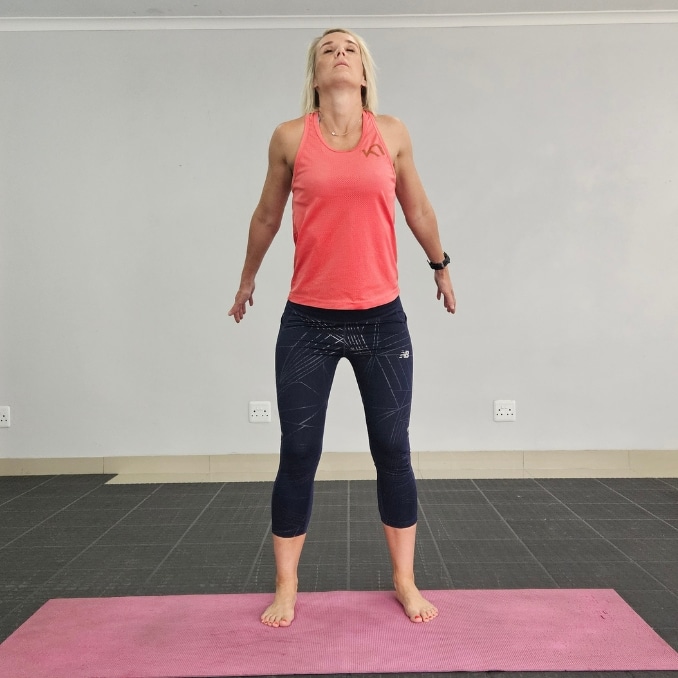 |
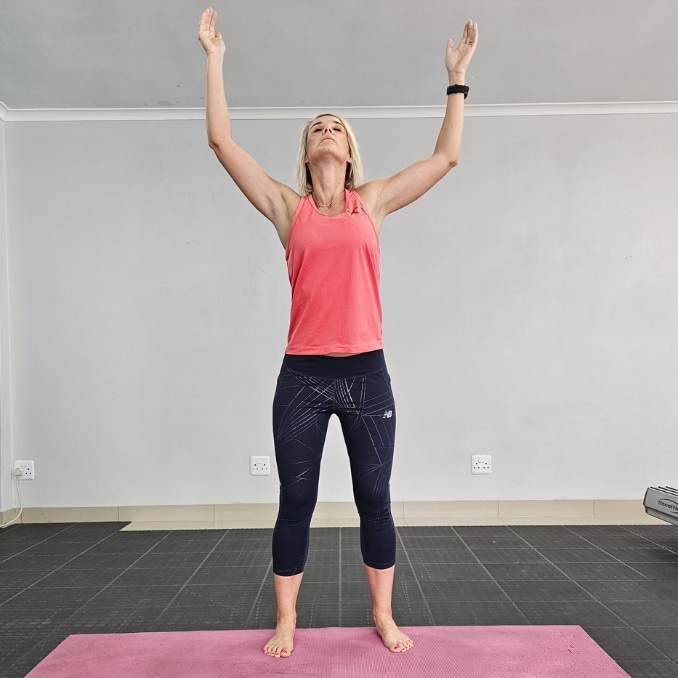 |
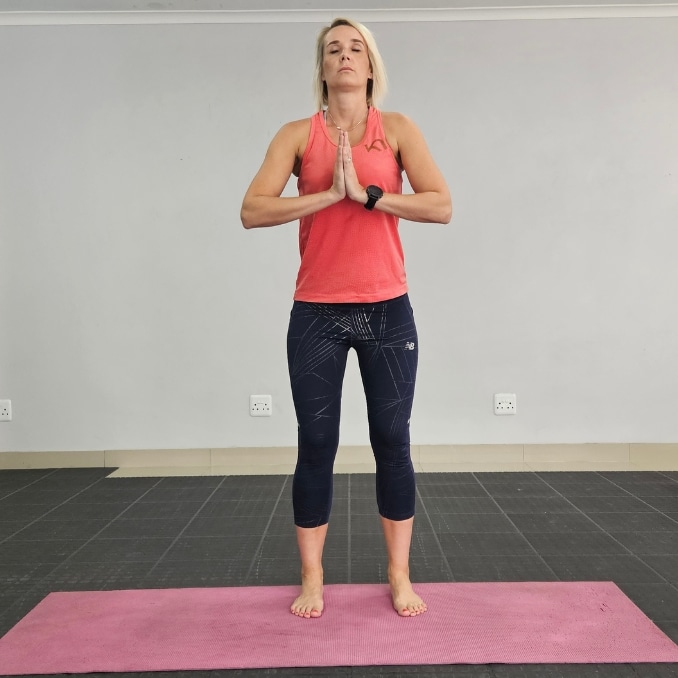 |
Standing Breaths
2. Wide-Legged Lateral Lunges
In this lateral exercises, begin this lateral exercise in an upright standing position with your feet considerably wider than shoulder-width apart, maintaining good alignment in your upper body. Place your hands on your thighs. Contract your abdominal muscles and shift your body weight to one side while extending your opposite leg. Return to the starting position and repeat the lateral lunge movement on the opposite side. Start with 1 set of 5 repetitions on each side.
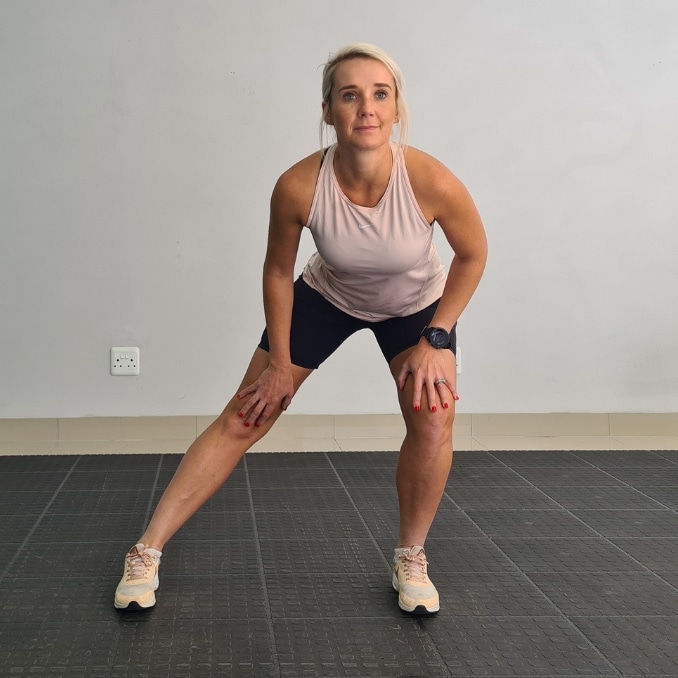 |
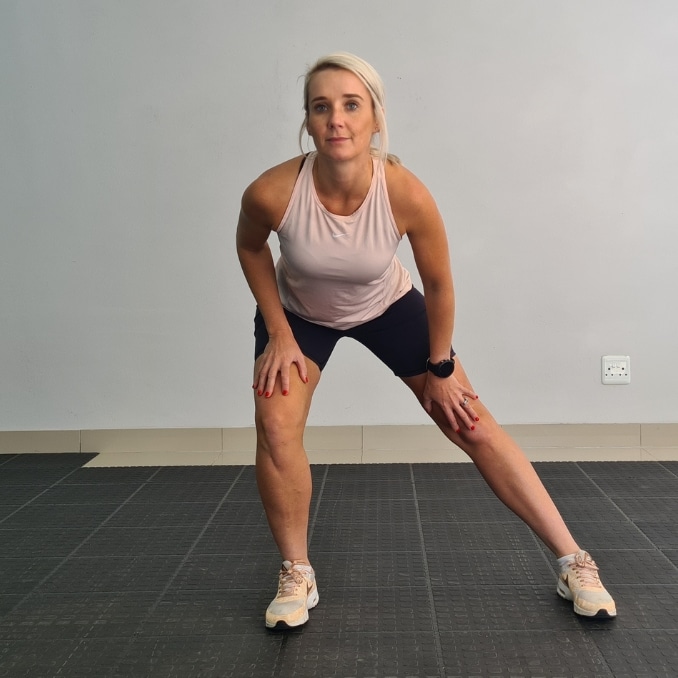 |
Wide-Legged Lateral Lunges
3. Standing Hip Circles
For this lateral exercises, utilize the back of the chair or wall for support if needed.
Begin in an upright standing position with your feet hip-width apart, maintaining good alignment with your head, shoulders, hips, and legs. Engage your core. Lift your left knee at a hip level in front of you. Then, move your left leg in a circular motion for several repetitions and switch to an opposite direction. The movement should originate from the hip joint. Lower your left foot to return to the starting position and repeat the movement on the opposite leg. Start with 1 set of 5 repetitions on each leg.
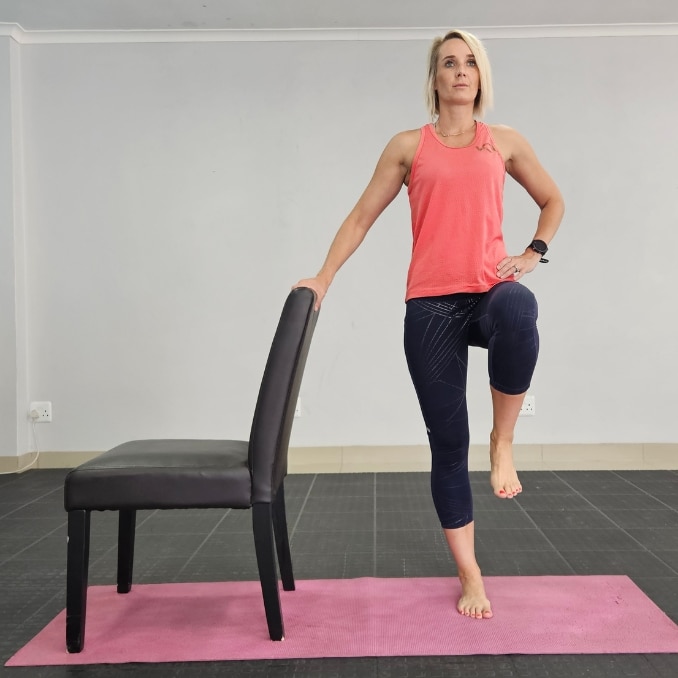 |
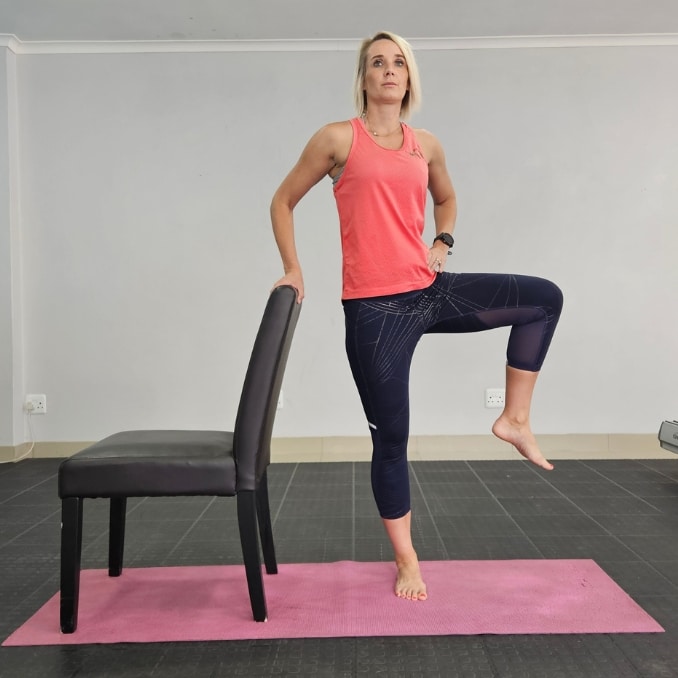 |
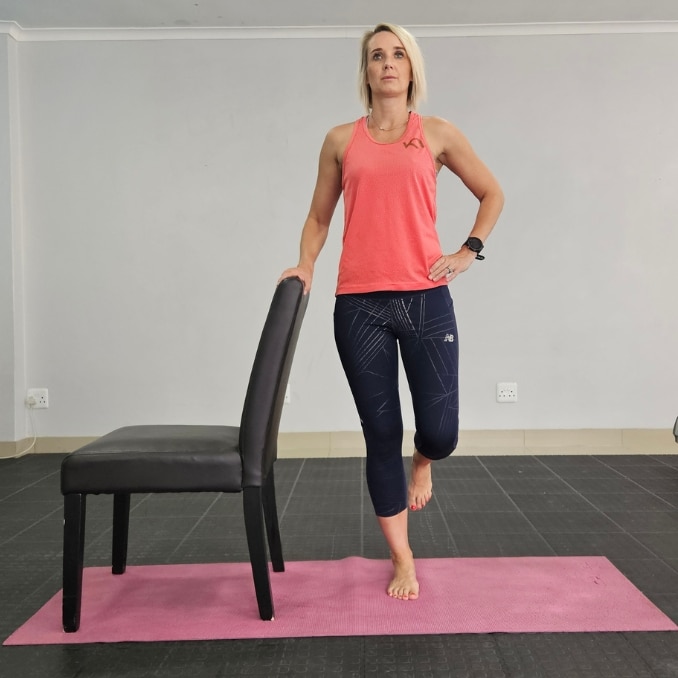 |
Standing Hip Circles
4. Heel Raise
For this exercise, utilize the back of the chair or wall for support if needed.
Begin in an upright standing position with your feet hip-width apart, maintaining good alignment with your head, shoulders, hips, and legs. Hold onto the back of the chair for balance. Engage your core and raise your heels on both feet, squeezing your glutes at the end position. Hold this position for several seconds. Lower your heels to return to the starting position and repeat the movement. Start with 1 set of 10 repetitions.

Heel Raise
5. Toe Raise
For this lateral exercises, utilize the back of the chair or wall for support if needed.
Begin in an upright standing position with your feet hip-width apart, maintaining good alignment with your head, shoulders, hips, and legs. Hold onto the back of the chair for balance. Engage your core and raise your toes as you stand on your heels on both feet, squeezing your glutes at the end position. Hold this position for several seconds. Start with 1 set of 10 repetitions.
 |
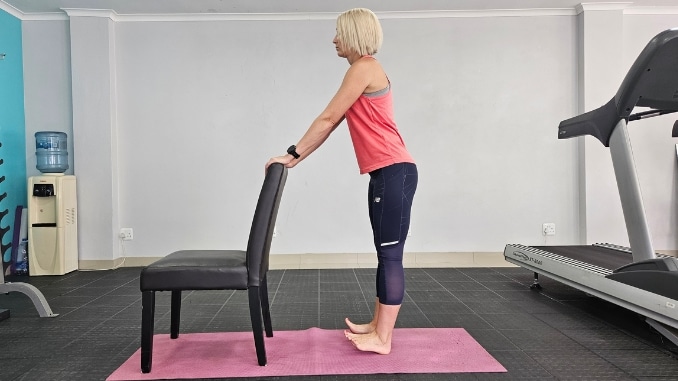 |
Toe Raise
6. Front Leg Extension
For this exercise, utilize the back of the chair or wall for support if needed.
Begin in an upright standing position with your feet hip-width apart, maintaining good alignment with your head, shoulders, hips, and legs. Lift one leg straight at knee level in front of you with the toes pointing upward, and hold this position for several seconds. Slowly lower your leg to the starting position and repeat the movement on the opposite leg. Start with 1 set of 5 repetitions on each leg.
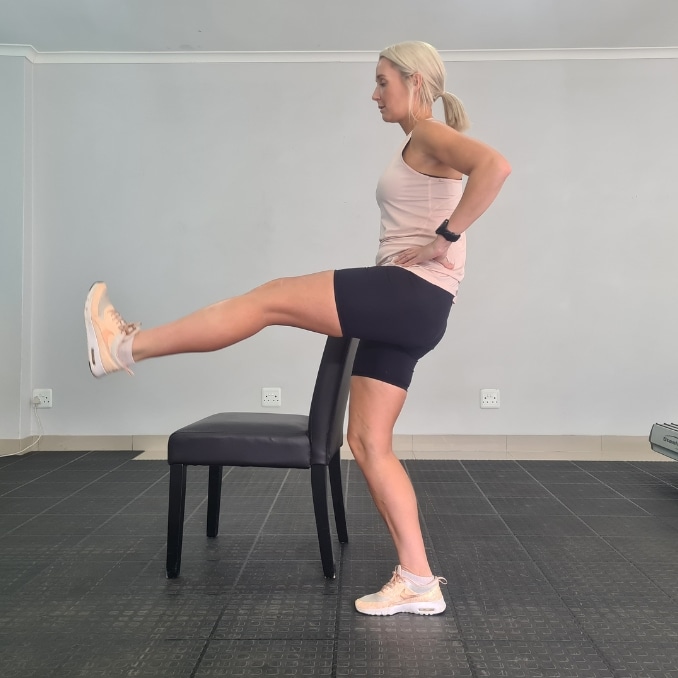
Front Leg Extension
7. Leg Extension
For this lateral exercises, utilize the wall or the back of the chair for balance if needed.
Begin in an upright standing position with your feet hip-width apart, maintaining good alignment with your head, shoulders, hips, and legs. Extend one leg straight behind you and hold this position for several seconds. Slowly lower your leg to the starting position and repeat the movement on the opposite side. Start with 1 set of 5 repetitions on each leg.
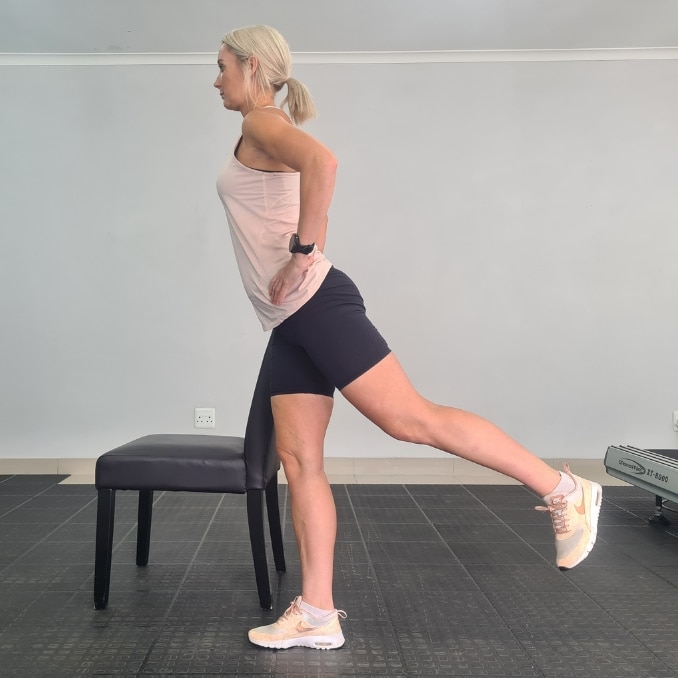
Back Leg Extension
8. Cat-Cow
Begin in a 4-point position with your hands beneath your shoulders and your knees under your hips. Contract your abdominal area. Exhale and slowly round your mid back as you lower your head towards your chest. Inhale and alternate the movement by lifting your head and arching your mid back. Hold each position for a couple of seconds. Repeat the movement, alternating directions. Start with 1 set of 5 repetitions.
Adjust the speed of the movement in each direction according to your comfort level.
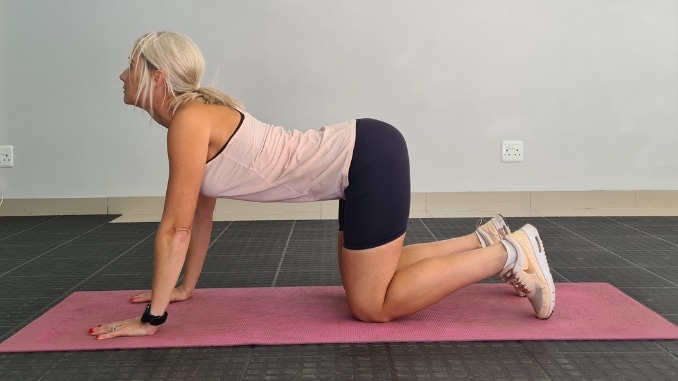 |
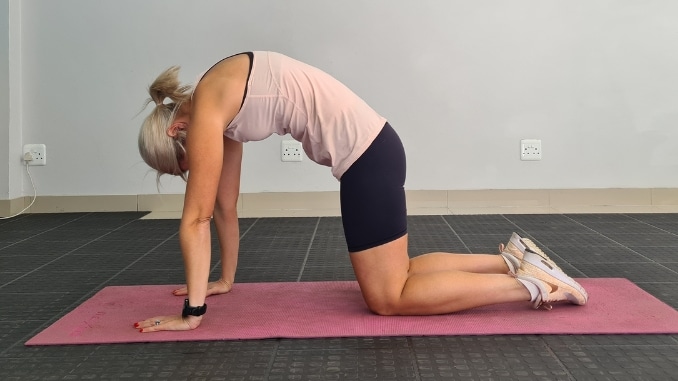 |
Cat-Cow
9. Child’s Pose
For this exercise, utilize a bolster or pillow to support your knees and head if needed.
Begin in an upright kneeling position with your knees wider than shoulder-width apart. Tighten your abdominal area and shift your hips back to your feet, extending both arms overhead. Rest your forehead on the floor and relax your midback area for a light stretch. Close your eyes and take several deep belly breaths, in through your nose and out through your mouth. Relax and return to the starting position.
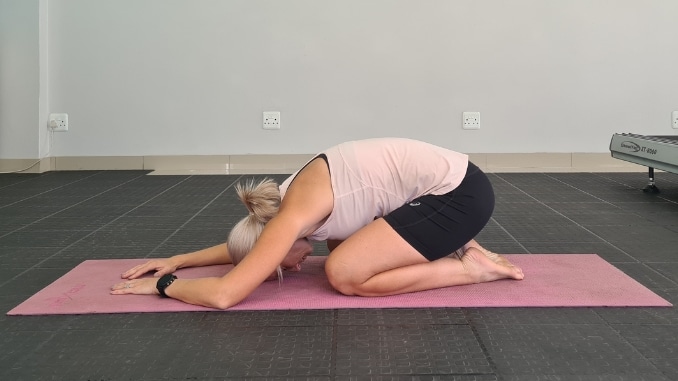
Child’s Pose
10. Bird-dog
Begin in a 4-point position, with your hands underneath your shoulders and your knees under your hips. Contract your abdominal area. Extend your left arm forward to align with your shoulder, then gently extend your opposite leg straight behind your body, keeping your hips and shoulders parallel with the floor. Hold the position for a couple of seconds. Return to the starting position and repeat the movement on the opposite side.
To make the movement for this lateral exercises easier, gently tap the toes of your extended leg to the floor.
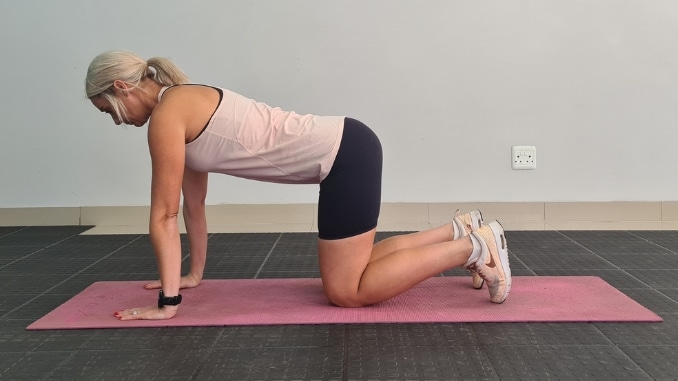 |
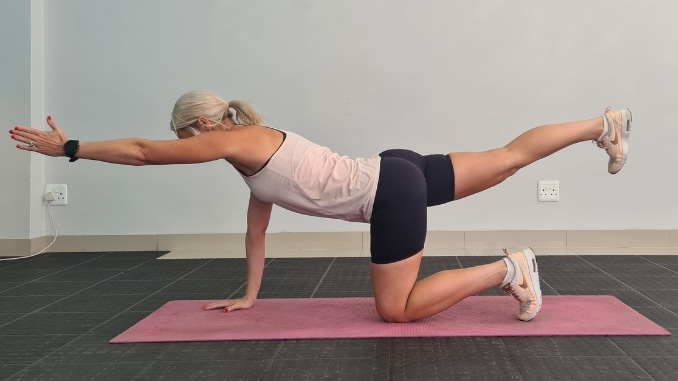 |
Bird-Dog
11. Bridge
Lie on the floor with your knees bent and your feet flat, maintaining good alignment with your head, shoulders, and hips. Place your arms on the sides and contract your abdominal area. Engage your core and push from your heels to lift your hips, squeezing your glutes at the end position. Hold this position for several deep belly breaths in through your nose and out through your mouth. Relax and lower your hips to return to the starting position. Repeat the movement as needed.
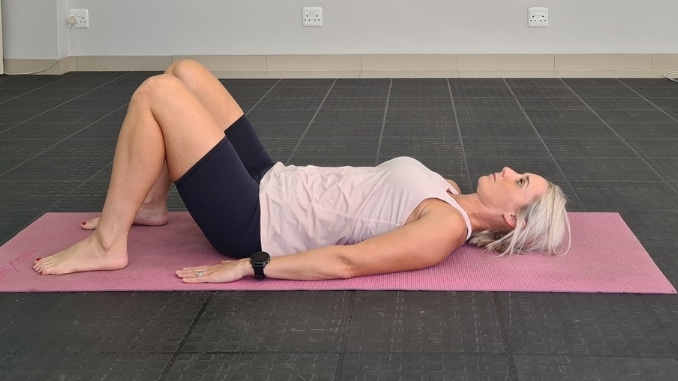 |
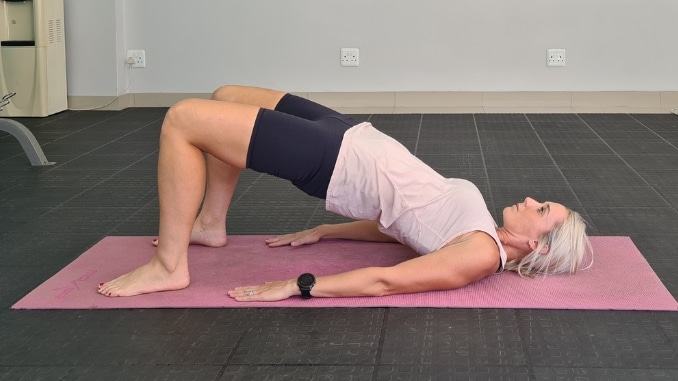 |
Bridge
Counter stretch: Full Body Stretch
Lie on your back on the floor, maintaining good alignment with your head, shoulders, hips, and legs. Engage your core while extending your legs and arms. Take a big reach overhead while arching your belly up toward the sky. Hold this position for several deep belly breaths in through your nose and out through your mouth.
Include counter stretches in your lateral exercises routine to maintain flexibility and improve range of motion, and do them gently after a deep stretch to prevent muscle tightness.
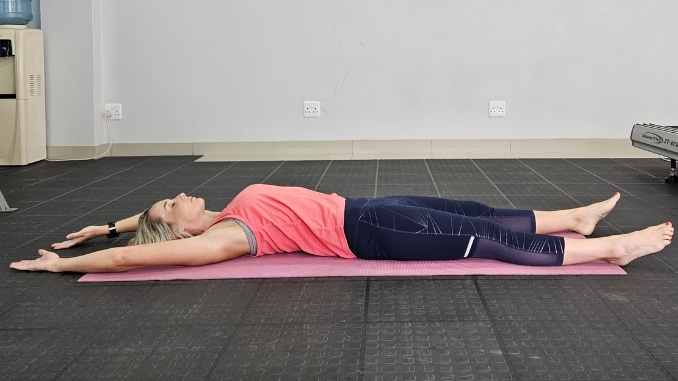
Full Body Stretch
12. Supported Butterfly Pose
Use yoga blocks, cushions, or pillows for support.
Begin by lying on your back with your knees bent and feet flat on the floor. Place your hands on your belly. Engage your core, bring the soles of your feet together, and open your knees out to the sides. Depending on your comfort level, place a pillow or cushion underneath each thigh for support if needed. Hold the position for several deep belly breaths, in through your nose and out through your mouth. Relax and return to the starting position.
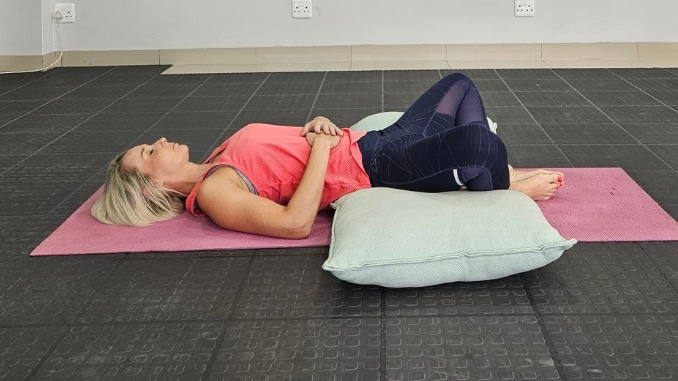
Supported Butterfly Pose
13. Butterfly Bridge
Begin by lying on your back with your knees bent and feet flat on the floor. Bring the soles of your feet together, opening your knees out to the sides. Tighten your core and push from your feet to lift your hips off the ground to a bridge pose, keeping your knees wide. Hold the position for several deep belly breaths, in through your nose and out through your mouth. Relax and return to the starting position.
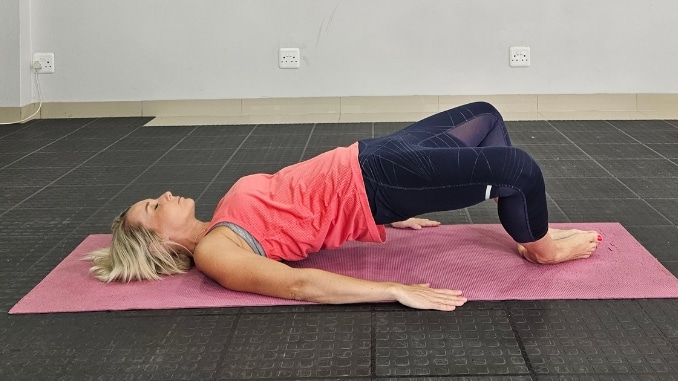
Butterfly Bridge
14. Knees to Chest
Lie on your back with your knees bent and your feet flat. Maintain good alignment with your head, shoulders, and hips. Bring both knees to your chest and hold for a light stretch in your lower back and glutes. Use your hands to pull your knees closer to your chest. Hold the position for 10 deep belly breaths, in through your nose and then out through your mouth. Lower both knees to return to the starting position and repeat the movement.
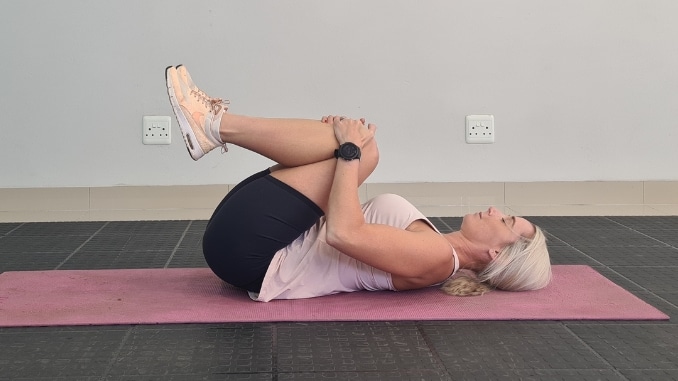
Knees to Chest
15. Legs on the Chair Pose
For this exercise, utilize the chair or wall for support if needed.
Move towards the chair, then lie on your back on the floor with your knees bent and feet flat on the floor. Bring your hands out to the sides, relaxing your upper body. Engage your core and raise your knees to a 90-degree angle, resting your calves and feet on the seat of the chair. Hold the position for several deep belly breaths, in through your nose and out through your mouth. Relax and return to the starting position.
To intensify this lateral exercises, move your seat closer to the chair.
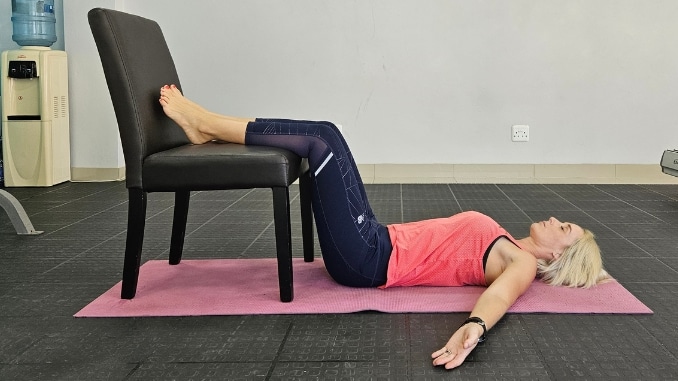
Legs on the Chair Pose
Other Lateral Movements
1. Side Plank with Dip Hips
Start on a side plank position, with your forearm on the ground and your left leg stacked over your right leg. Engage your core and dip your hips down towards the ground, then lift them back up to the start position. Start with 1 set of 10 repetitions on each side.
2. Lateral Plank Walk
Begin in a straight-arm plank position, maintaining good alignment with your head, shoulders, hips, and legs. Engage your core, then move your right hand and right foot to the side to begin. Transfer your weight onto your right side as you proceed to follow with your left hand and left foot. Start with 1 set of 10 repetitions in each direction
3. Lateral Shuffle
Begin in an upright standing position with your feet shoulder-width apart and your knees slightly bent. Hinge through your hips to move into an athletic position. Engage your core and take a step to the left side with one foot, following with your other foot in a shuffling motion. Repeat the movement on the opposite side. Keep alternating movements for a duration of 30 to 60 seconds.
Conclusion
In conclusion, strengthening and lengthening the lateral areas of the lower body is a crucial aspect of overall physical well-being. These muscles, including the hip abductors, tensor fasciae latae, and outer thigh muscles, are essential for stability, balance, and functional mobility. Whether you are a fitness enthusiast, an athlete, or someone in rehabilitation, focusing on lateral leg exercises offers numerous benefits.
By targeting these muscle groups, you enhance your ability to perform everyday activities and athletic endeavors and reduce the risk of injuries, particularly around the hip and knee joints. Strong and flexible lateral leg muscles improve balance, agility, and posture, making maintaining stability in various movements easier. Furthermore, these exercises contribute to a well-rounded lower-body workout routine, ensuring you address all aspects of your lower body's strength and flexibility.
Incorporating lateral movements into your fitness regimen is smart, promoting physical strength and a sense of confidence and well-being while managing the challenges of everyday routines and physical tasks.
Would you like a fast, but highly effective workout that targets, stretches and strengthens just about all of the major muscle groups in your body? Either way, this Whole Body Primer Workout is perfect. Check out now!

